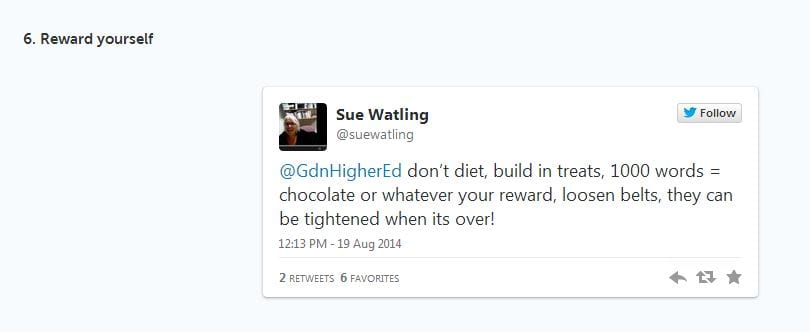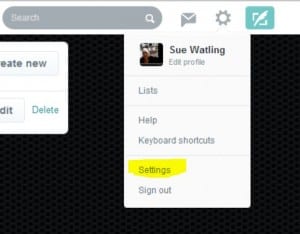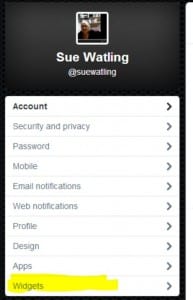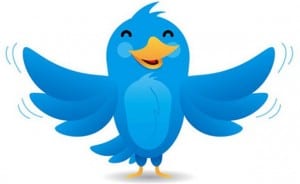 TELEDA is on Twitter. We’ve had our first Tweet Meets. These are synchronous events, also known as Twitter Chat or Twitter Party. Social media creates connections which can lessen the isolation of learning online and on TELEDA we’re learning how. Tuesday, between 8-9 a.m. and 7-8 p.m., and again 8-9 a.m. Thursday, colleagues were invited to pose questions using the hashtag #askTELEDA. Tweets were collected via Storify 4th November and 6th November
TELEDA is on Twitter. We’ve had our first Tweet Meets. These are synchronous events, also known as Twitter Chat or Twitter Party. Social media creates connections which can lessen the isolation of learning online and on TELEDA we’re learning how. Tuesday, between 8-9 a.m. and 7-8 p.m., and again 8-9 a.m. Thursday, colleagues were invited to pose questions using the hashtag #askTELEDA. Tweets were collected via Storify 4th November and 6th November
 Setting up @TELEDALincoln has exposed my own lack of Twitter Literacies. I could tweet and follow, throw in the occasional hashtag, but my performance had no depth. I didn’t really understand how Twitter worked. I’m still not sure I fully get it – or if I need to. This reinforces how shallow our digital literacies can be. We learn what’s needed to perform online. We become good enough. The Tweet Meets raised a number of interesting questions:
Setting up @TELEDALincoln has exposed my own lack of Twitter Literacies. I could tweet and follow, throw in the occasional hashtag, but my performance had no depth. I didn’t really understand how Twitter worked. I’m still not sure I fully get it – or if I need to. This reinforces how shallow our digital literacies can be. We learn what’s needed to perform online. We become good enough. The Tweet Meets raised a number of interesting questions:
|
Management of multiple twitter accounts for work and non-work subjects |
There were also suggestions for the most appropriate hashtag e,g, #Tweetites, #Tweetettes or #Tweetpeeps I like #teledites but I collect fossils so I would. #twite-quette was been used with regard to manners and #tw_eat_ing for twitter at meal times. Clearly, creativity is another reason to engage with tweeting! #askTELEDA collated useful Twitter themed resources.
| Ten Commandments of Twitter for Academics http://m.chronicle.com/article/10-Commandments-of-Twitter-for/131813 Twitter Top Tips http://www.slideshare.net/suebeckingham/twitter-top-tips 50 Ways to Use Twitter in the Classroom http://www.teachhub.com/50-ways-use-twitter-classroom 25 interesting ways to use Twitter http://www.slideshare.net/travelinlibrarian/twenty-five-interesting-ways-to-use-tw |
Not bad for the first week! There are multiple reasons for engaging with Twitter, not least because it separates the hype from the reality. 140 characters encourages precision with words, attention to sentence construction, rethinking how to communicate via text. These are all useful transferable skills. Twitter is like following a blog but quicker. Another name for tweeting is micro-blogging. The choice of who to follow is influenced by shared interests. Like wiki’s which harness the collective wisdom of crowds, Twitter offers links to information and alternative perspectives. what’s not to like?
Ultimately, Twitter is what you make of it. An online identity has become a prerequisite of professional practice. It shows engagement with digital ways of working and encourages us to consider how our digital selves mirror and extend our personality. Although the internet supports anonymity and alternative construction of character, we’re as recognisable online as off. Even in 140 characters or less.
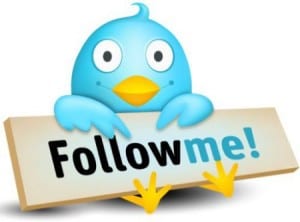 @TELEDALincoln
@TELEDALincoln
image from http://www.telegraph.co.uk/technology/twitter/10306627/Twitter-IPO-14-fun-facts.html

